Using smart manufacturing methods and the Internet of Things (IoT), we created an automated temperature controlled box to improve the print quality of our MakerGear M3-ID 3D printers.
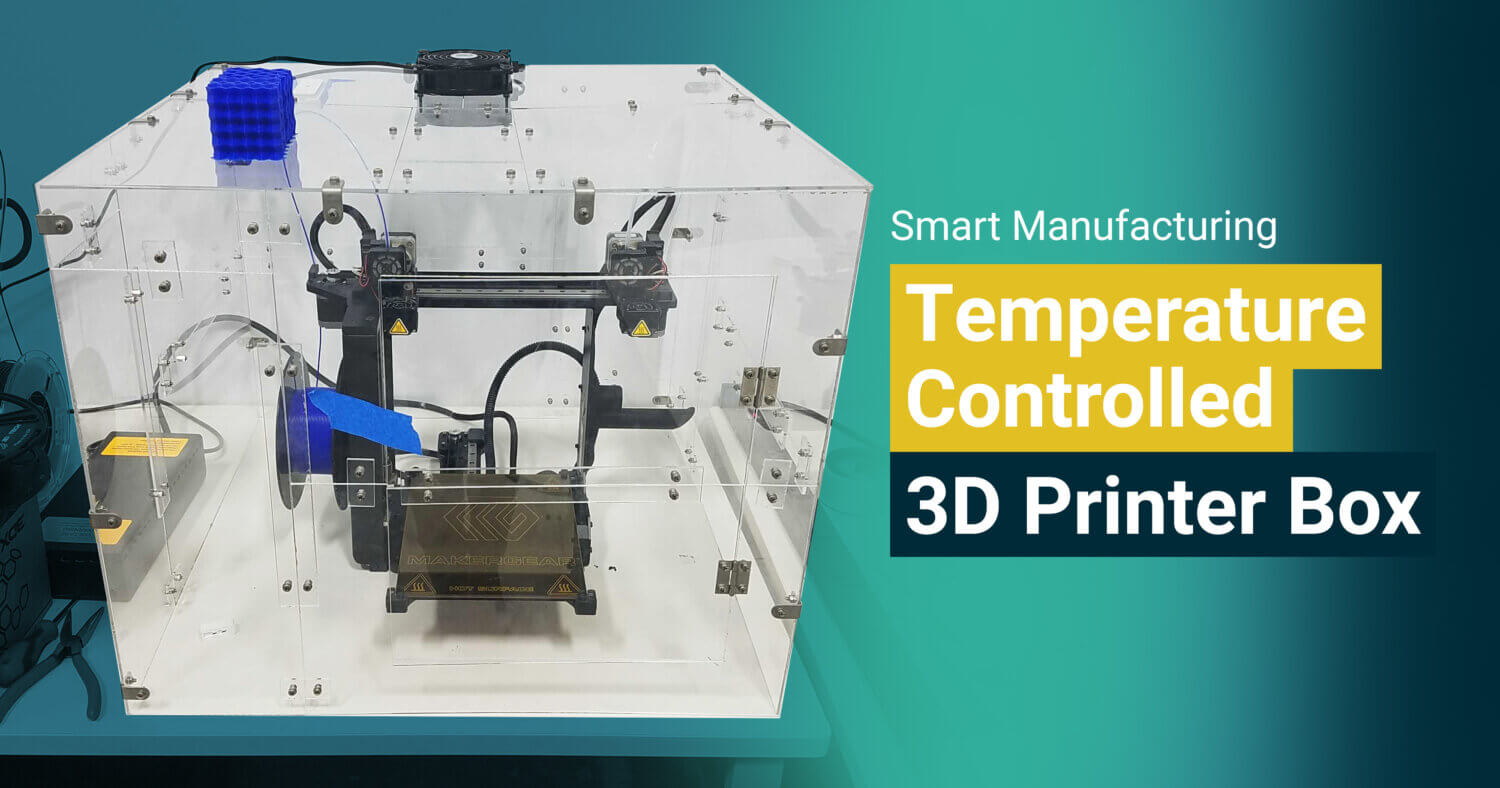
Temperature stability in additive manufacturing
3D printing is like baking: if the oven isn’t a consistent temperature, your cake won’t bake properly. The same goes with additive manufacturing: inconsistent temperatures create conditions for inconsistent print quality.
Temperature deviations can really mess with your print. In our case, temperature stability was the big issue, with large differences in temperature at the point of printing, the rest of the print, and the area around the printer. In the thermal image below, the difference from highest to lowest temperature is a whopping 315°F. This temperature instability was showing up as performance inconsistencies in our carbon fiber reinforced thermoplastic prototypes once we got to crushing them in our Instron universal tester.
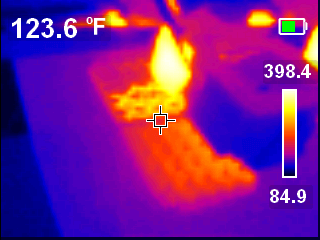
Thermal image: The hottest part of the MakerGear M3-ID 3D printer was reaching almost 400°F (~204°C), with vastly lower surrounding temperatures.
The importance of high-quality 3D printed prototypes
3D printing prototypes of our mechanical metamaterials is a crucial part of our manufacturing process, as additively manufactured parts allow us to rapidly design, fabricate, test, and validate our work before moving onto scaled manufacturing methods, such as thermoforming.
Inconsistent quality of the prints isn’t the only issue here – there’s a lot of heat being produced unnecessarily and then escaping into the workshop (which increases the overall ambient temperature, which doesn’t help).
We needed a solution that would give us back the technical control we require for our prints and eliminate this waste of energy.
Constructing a temperature controlled 3D printer enclosure
We decided to go the DIY route and construct our own automated temperature controlled box. There are some existing examples of pre-made enclosures available on the market, like those from 3DUPfitters, and homemade insulation systems using inexpensive moving blankets, but we wanted an excuse to break out our Glowforge Plus laser cutter and get our hands dirty making our own acrylic box.
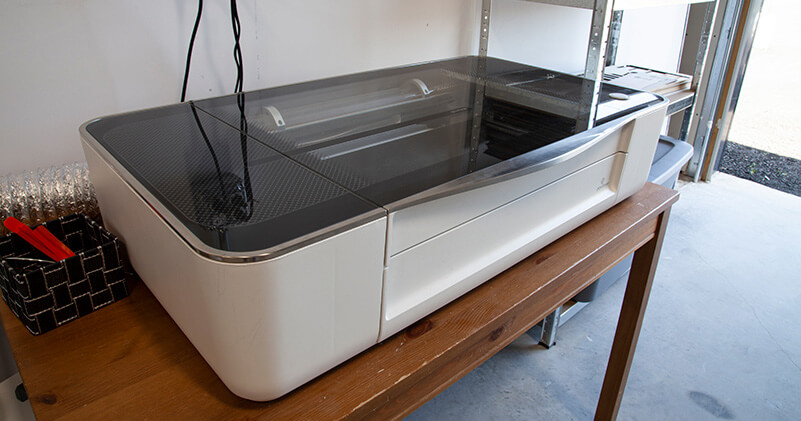
Photo: Glowforge Plus laser cutter ready for action.
Smart (additive) manufacturing
It wasn’t enough to just stick a fan on a box and flip a switch during printing. We needed our enclosure to be smart.
Smart manufacturing uses technology, like the IoT, to analyze and improve manufacturing performance in real time. It can be as simple as our temperature controlled box or as complex as an entire manufacturing systems, from suppliers through to customers. Smart manufacturing creates better quality products, improves productivity, and increases energy efficiency.
In order to automate our box’s temperature system we inserted a temperature sensor and a fan controlled by a Samsung SmartThings Hub. When the temperature inside the box reaches 95°F the fan turns on, and when it hits 94.9°F or below, the fan turns off. The SmartThings Hub is handily controlled using an app that also displays sensor and historic temperature data.

Photo: MakerGear M3-ID 3D printer in our DIY smart temperature controlled box, printing a MetaCORE prototype.
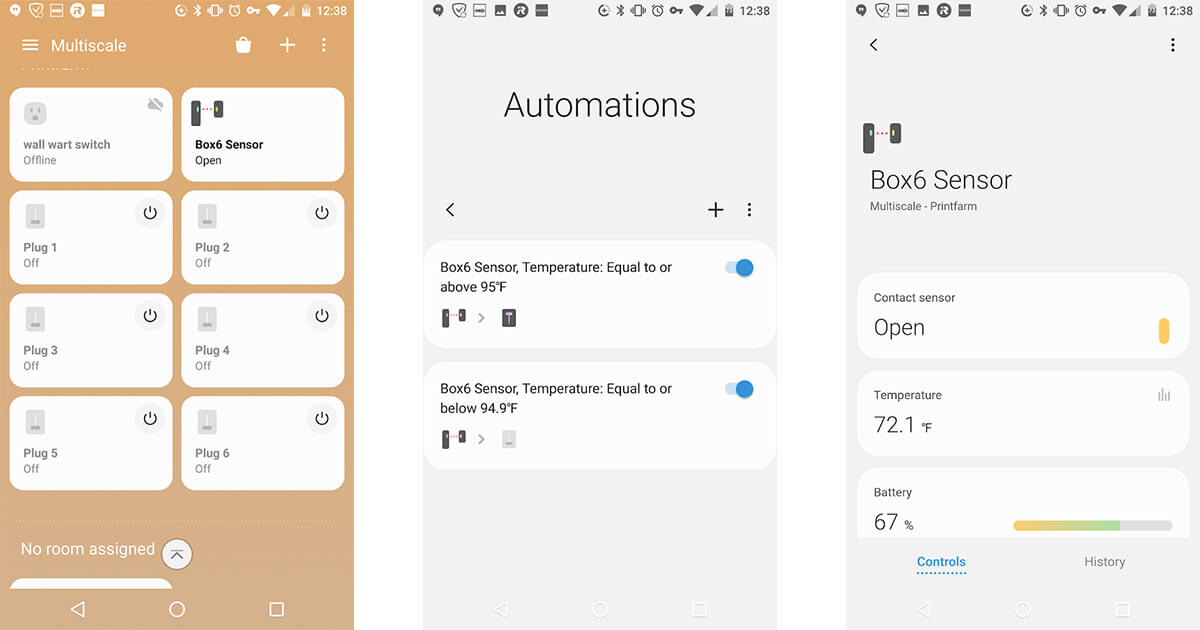
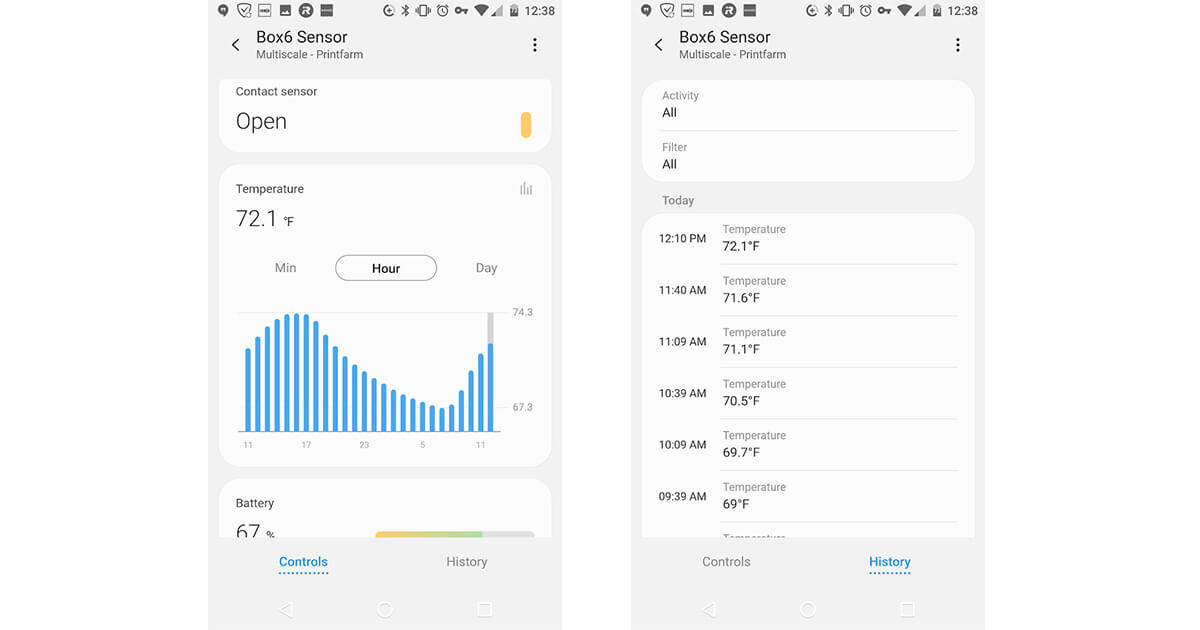
Screenshots: Samsung’s SmartThings Hub app with automation settings, temperature history, and real time data.
The result: a much lower, more stable temperature for creating high quality 3D prototypes. With the automated temperature control, we’re averaging around 70°F for the hottest area during printing with a range of only 14°F from the hottest to the coolest areas throughout the box.
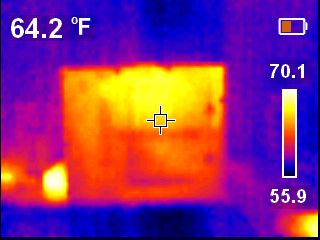
Thermal image: The temperature inside the 3D printer box is now lower and more stable, reading a max. temperature of 70.1°F (~21°C) inside the box, and only 14°F difference from the hottest to coolest area.
With the success of our first enclosure, we’re in the process of creating temperature controlled boxes for the five other MakerGear M3-ID 3D printers in our print farm. And with the SmartThings Hub app, being able to monitor and automate all the printers at once will make our lives easier while saving us energy and providing more consistent prototypes.
Latest Lab Notes
News /
March 11, 2025 – Multiscale Systems to showcase cutting-edge industrial innovation during StartUp Week Worcester 2025.

News /
Multiscale Systems receives Massachusetts manufacturing award in recognition of outstanding leadership skills in the manufacturing industry.

Press Release /
WORCESTER, Mass. (July 12, 2024) – Multiscale Systems to build new facilities, expand advanced manufacturing capabilities, and bring jobs to Worcester with grant investment.
 Karen Tisdell, Director of Communications, connects people to products, ideas, and experiences. She leads on all things communications at Multiscale, including branding, strategy, and content.
Karen Tisdell, Director of Communications, connects people to products, ideas, and experiences. She leads on all things communications at Multiscale, including branding, strategy, and content.
